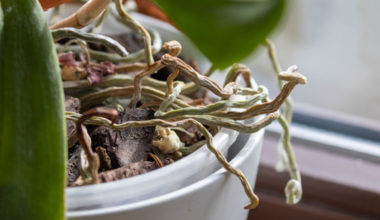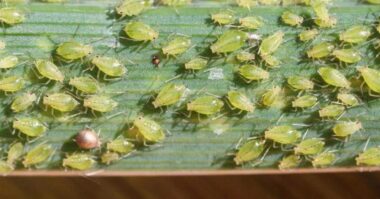The orchid is a surprising plant. Apartment orchids, the epiphytes, do not bloom all year round, but they can bloom for up to four months with a frequency of once or twice a year.
Knowledge of these orchid flowering cycles is important to anticipate necessary treatments and to better tame this sublime interior decoration plant.
Contents
How long do orchids generally stay dormant?
The resting phase of orchids often leads to confusion, since one could very well think that this plant is in fact dead, this is not in fact the case, it is significant not to get rid of it!
Orchids have a dormancy system that lasts from six to nine months, once this period is over, the orchid will bloom again by itself as if by magic.
How to take care of an orchid that is in dormancy?
It is not very difficult to take care of an orchid, but there are some basic rules to follow to ensure that it blooms regularly and has a long life.
It is a good idea to feed your orchid with a suitable fertilizer, especially during the flowering period (just after the dormancy phase).
However, according to experts, it is best to use 1/3 (or even ¼) of the manufacturer’s recommended dose of fertilizer: too much fertilizer can quickly harm the plant, and rot its roots.
What is the flowering cycle of an orchid?
Orchids do not generally bloom all year round. Only terrestrial species or perennial orchids can sometimes bloom all year round. Flowering is a particular period for the plant. It is a pre-reproduction phase that requires a lot of nutrients for the plant. Flowering can be boosted by fertilizer but be careful because sometimes this can kill it very quickly.
As a general rule, an orchid blooms once or twice a year. Among others, phalaenopsis and cattleya bloom during spring-autumn while vanda can only bloom once a year. The dendrobium blooms mostly from January to March but can bloom a second time in the fall.
If these plants have flowering periods, it does not mean that outside they are devoid of flowers. On the contrary, phalaenopsis can always have flowers thanks to a progressive renewal.
How to encourage your orchid to bloom again
There are several things you can do to encourage your orchids to bloom again after the last flower has fallen. To begin, you should cut the stem an inch above the second bract. These brackets protect the nodes on which you can expect new growth.
The greenhouse is an excellent environment to encourage orchids to bloom, as you can manipulate the light and temperature of the plants. For example, orchids prefer soft light to bright sunlight. You can also make sure that orchids receive cool nighttime temperatures, which they like.
To help your orchids bloom, they should also recover the energy they used in the initial cycle. This includes applying liquid fertilizer and watering them. From the name itself, orchids are great for watering without the risk of over or under watering since they only require three ice cubes per week.
How to care for orchids after dormancy
Orchids will eventually undergo a rest period to prepare for the next bloom cycle. During this time, remember to water the plants weekly with ice cubes and feed them with a balanced fertilizer every two weeks. Never water your orchids the week you fertilize them.
The greenhouse will also allow you to provide indirect sunlight during the orchid’s resting period. You need to maintain a cool nighttime temperature when they are dormant to trigger re-flowering. Generally, daytime temperatures should be between 75 and 85° F and cool the greenhouse at night.
For maintenance, check your orchids weekly and remove spent flowers and dried stems. You may also encounter white scales or bumps, so treat infected plants with rubbing alcohol and isolate them to prevent the infestation from spreading. You can take the same approach if you see scale insects causing white fuzzy spots on plants, and spray lightly with horticultural oil if you find tiny webs of spider mites.
Finally, orchids can be prone to fungal diseases. If you notice a foul odor, it is probably a bacterial infection, while no change in odor may mean a fungal disease. For fungal infections, isolate your infected plants and remove the infected area with scissors before spraying a fungicide.
How do I extend the life of an orchid?
To extend the life expectancy of an orchid, careful maintenance each season is essential. Place this tropical plant in a bright and airy room, while avoiding direct sunlight. The temperature of the room should not exceed 75°F. In addition, because the orchid requires a relatively high level of humidity, remember to water and mist it regularly.
In the spring, the flowering period, you can give it growth fertilizer. Finally, every 3 or 4 years, repot your plant in a potting soil for orchids. This will act as a rejuvenation cure and will consequently prolong the life of your orchid.








